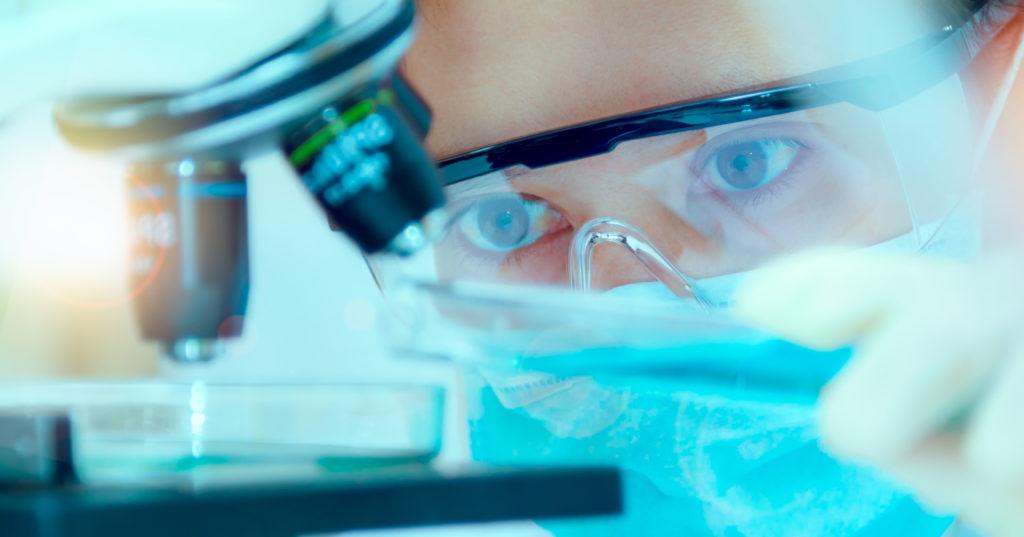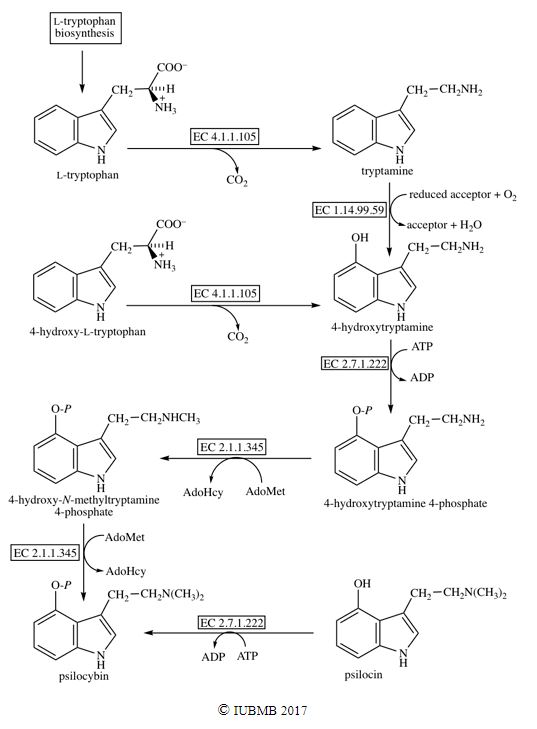
In August of 2017, researchers at the Hans Knöll Institute in Jena, Germany characterized four enzymes magic mushrooms use to convert tryptophan (a naturally occurring amino acid) into psilocybin.1 The names of the four enzymes (actually, the names of the genes that code for them) the researchers discovered in the mushrooms are:
- PsiD – L-tryptophan decarboxylase – This represents a new class of fungal enzymes.
- PsiK – 4-hydroxytryptamine kinase
- PsiM – Psilocybin synthase
- PsiH – Tryptamine-4-monooxygenase
Note – The names of enzymes often end in the suffix -ase.
Additional work done by this research team in May 2018 added to the knowledge base of the enzymatic synthesis of psilocybin by magic mushrooms.2 In this new study, they enhanced psilocybin production in vitro by adding TrpB, the tryptophan synthase of the mushroom Psilocybe cubensis, to the reaction. This observation is important because it shows mushrooms can make psilocybin using 4‐hydroxyindole and L‐serine as substrates. When it comes to making psilocybin in the lab, these other substrates costs less money than those used in previous synthesis methods.
Visualizing the Biosynthesis of Psilocybin
The website for Queen Mary University in London, UK has an informative diagram of the biosynthesis of psilocybin from tryptophan which is shown in Figure 1. Magic mushrooms also contain trace amounts of psilocin, and the diagram shows the pathway for mushrooms to convert psilocin into psilocybin, too. The European Community (EC) designations in the diagram and their corresponding enzymes are as follows:
EC 4.1.1.105 = PsiD, L-tryptophan decarboxylase
EC 2.7.1.222 = PsiK, 4-hydroxytryptamine kinase
EC 1.14.99.59 = PsiH, tryptamine-4-monooxygenase
EC 2.1.1.345 = PsiM, psilocybin synthase

Figure 1: The biosynthesis of psilocybin from tryptophan and psilocin. AdoHcy = S-adenosyl-L-homocysteine, AdoMet = S-adenosyl methionine, ATP = adenosine triphosphate, ADP = adenosine diphosphate. Image from Queen Mary University, UK.
A World of Possibilities for Discovery
Scientists are slowly teasing apart and understanding the biochemical pathways magic mushrooms use to synthesize their psychoactive compounds. As these organisms are studied and more is learned, researchers can apply the information to understand how the compounds may work in the human body.
Some of the most profound questions about magic mushrooms still center around how all the compounds interact with each other and receptors in the brain. The entourage effect of the compounds in magic mushrooms is a wide open area for study.
